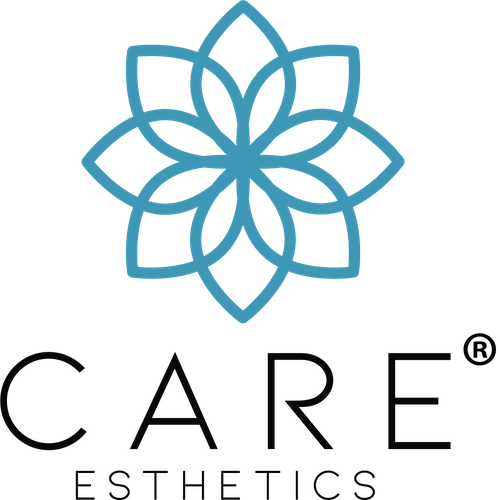
After you spend time, effort, and money on orthodontic treatment for a beautiful smile, your journey continues. Retainers are very important because they help keep your teeth in place. They stop your teeth from moving back to where they were before, which is called relapse. This can happen because of the fibers in your gums and the ongoing pressure on your teeth. Retainers also help prevent malocclusion, where your upper and lower teeth do not align properly when your mouth is closed.
Retainers work by stabilizing your teeth in their new positions. They give the bone and tissues around your teeth time to adjust. If you wear your retainer as your orthodontist tells you, you can benefit from your orthodontic treatment for a long time and keep your oral health at its best.
What Are Retainers?
Custom-made from plastic, metal, or a combination of both, retainers fit snugly over your teeth. They prevent teeth from shifting post-orthodontic treatment. Clear retainers offer discreet options, while others feature metal wires across the front of the teeth. Retainers maintain teeth alignment achieved through braces or clear aligners by applying gentle pressure. Your orthodontist will recommend the best type and duration of wear based on your unique needs and treatment plan.
The Role of Retainers in Orthodontic Success
Orthodontic success means more than just straight teeth. Retainers are crucial for keeping your teeth stable and healthy in the long term by preventing them from shifting back post-braces. They act as insurance for your smile, preserving the benefits of your orthodontic treatment.
Types of Retainers: Fixed vs. Removable
Retainers come in two main types: fixed and removable. Fixed retainers are discreet and low-maintenance, while removable ones can be taken out as needed, such as during meals or brushing your teeth. Your orthodontist or general dentist will select the appropriate retainer based on your individual needs and the complexity of your case, each with its own unique features and considerations.
Characteristics of Fixed Retainers
Fixed retainers are permanently attached to your teeth, typically used on the lower front teeth. Made of a thin wire hidden behind the teeth, they passively maintain alignment without user intervention. They provide strong retention but can complicate oral hygiene by requiring extra effort for flossing. Regular dental checkups are crucial for maintenance and wire integrity. Fixed retainers are held in place with a strong glue-like bonding agent, ensuring that they stay in place and effectively maintain the alignment of your teeth.
Benefits and Drawbacks of Removable Retainers
Removable retainers are the most popular type of retainer. They are flexible and easy for patients to use. Unlike fixed retainers, you can take them off and put them back on easily. This means you can eat, drink, and clean your mouth normally. There are different kinds of removable retainers, including:
- Hawley retainers: These are traditional retainers. They have a metal wire that goes over the front of your teeth, and an acrylic plate that sits against the roof of your mouth.
- Essix retainers: These are clear, plastic retainers. They fit snugly over your teeth and look nearly invisible.
Benefits:
- Convenient to wear
- Easy to clean
- Discreet options available
Drawbacks:
- You need to wear them consistently for the best results
- They can be lost or damaged easily
- They might cause slight problems with speech at first
Proper Usage and Care for Your Retainer
To keep your new straight smile, you need to use your retainer correctly and follow a care routine. Your orthodontist will give you specific directions based on the type of retainer you have, but there are some common rules for both fixed and removable ones.
If you don’t take care of your retainer, it can cause problems like plaque buildup, bad breath, and damage to the retainer. This can affect how well it works and could harm your oral health.
Daily Maintenance Tips for Retainers
Maintaining good oral hygiene is crucial for a healthy smile and retainer. Clean your retainer daily with a soft-bristled brush and gentle toothpaste to prevent bacteria and plaque buildup. For removable retainers, avoid hot water to maintain shape. Rinse well after each use and brush daily. Fixed retainers require daily care, too; focus on cleaning the wire thoroughly during brushing and flossing. Your orthodontist may recommend special tools like floss threaders for proper dental care.
How to Safely Store Your Removable Retainer
When not using your removable retainer, it is crucial to store it properly to avoid damage and hygiene issues. Use a special case to protect it and prevent breakage. Rinse the retainer with lukewarm water before storing to prevent bacteria buildup and bad smells. Store the case in a safe place for easy access. Your retainer is vital for maintaining your smile; handle it with care!
Common Issues and Solutions
Even with careful cleaning, you might have some problems with your retainer. If you know about these issues and how to fix them, you can handle your retainer better.
If you have ongoing issues or are worried about something, don’t hesitate to talk to your orthodontist. They are the best source for help and support as you go through your orthodontic retention phase.
Addressing Discomfort and Adjustments
Using a retainer, especially a removable one, may cause initial discomfort or tightness. This is normal as your mouth adjusts to the appliance. If discomfort persists beyond the first few days or becomes severe, consult your orthodontist for adjustments. Avoid altering the retainer yourself to prevent damage. Open communication with your orthodontist is key for effective treatment and addressing any concerns promptly.
What to Do if Your Retainer is Lost or Damaged
Losing or breaking your retainer can be stressful as you’ve worked hard to keep your smile straight. Contact your orthodontist promptly to prevent teeth shifting. They will assess the retainer and recommend a replacement if necessary. Acting fast is crucial to maintaining your orthodontic results.
Lifespan of Retainers and When to Replace Them
Retainers are made to be strong, but they can break and won’t last forever. Over time, things like normal use and teeth grinding can wear them down.
Getting regular dental checkups is essential. These checkups help you keep an eye on your retainer’s condition. They also tell you when it’s time to get a new one.
Signs That You Need a New Retainer
Recognizing when your retainer needs replacing is crucial for maintaining your orthodontic results. A loose, cracked, or discolored retainer can cause discomfort and affect the alignment of your teeth. Check for signs of wear regularly and consult your orthodontist if needed.
Contact Us
If you need a retainer, Holmes Dental is here to help. Contact us online or by phone to set up a consultation with one of our dentists today.

 Dan Holmes, DDS
Dan Holmes, DDS Nicole Holmes, DDS
Nicole Holmes, DDS Our Team
Our Team




